
In response to the dynamic demands of a globalized marketplace, an escalating number of businesses are turning to the outsourcing of procurement functions as a strategic avenue to bolster efficiency and realize significant cost savings. The allure of tapping into external expertise, leveraging economies of scale, and focusing internal resources on core competencies has made procurement outsourcing an appealing proposition. Nevertheless, as organizations embark on this transformative journey, it becomes evident that the path to streamlined procurement is fraught with challenges.
This comprehensive article endeavors to unravel the intricacies surrounding the adoption of procurement outsourcing, shedding light on the formidable hurdles that may potentially cast shadows over your business. Through an in-depth exploration of these challenges, our aim is not only to illuminate the potential pitfalls but, more importantly, to equip you with effective strategies and insights that will empower your organization to navigate and overcome the complexities inherent in the outsourcing of procurement processes.
Table of Contents
6 Procurement Outsourcing Challenges Impacting Your Business
Procurement assumes a central role in sculpting the prosperity and adaptability of organizations. Yet, within this pivotal function lies a labyrinth of intricacies. While businesses are progressively drawn towards outsourcing procurement processes as a strategic lever for heightened efficiency and cost reduction, this trajectory is not devoid of formidable challenges. The very essence of this critical function opens the gateway to a set of complexities that wield the potential to profoundly influence the operational fabric of enterprises.
In this exploration of the procurement domain, we delve into the heart of the matter, spotlighting the six procurement challenges that cast a looming shadow over businesses. From mitigating risks and navigating dark purchasing practices to ensuring transparency, data accuracy, and successful technology adoption, these challenges underscore the intricate nature of modern procurement. Join us as we dissect each hurdle, offering insights into effective strategies to not only confront but triumph over the procurement challenges impacting your business.
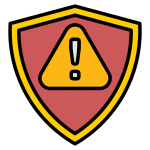
1. Mitigating Risks
Procurement is inherently intertwined with various risks that, if not managed adeptly, can have far-reaching consequences for businesses. The process of sourcing goods and services involves exposure to geopolitical uncertainties, supply chain disruptions, and regulatory changes, among others. The unpredictable dynamics inherent in external factors have the potential to trigger elevated expenditures, delayed deliveries, and compromises in product quality.
Moreover, a deficiency in effectively addressing these risks possesses the potential to cloak a company’s reputation in darkness, diminishing its standing and corroding the trust bestowed upon it by stakeholders. This, in consequence, ripples throughout the corporate terrain, impacting longstanding connections with suppliers and customers alike. Thus, the challenge of mitigating risks in procurement is not merely a financial concern but extends to the broader spectrum of organizational reputation and stakeholder confidence.
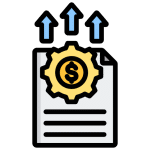
Dark purchasing practices, characterized by unauthorized and unmanaged spending within an organization, pose a significant challenge to effective procurement. The lack of visibility and control over these expenditures can lead to financial leakages, budget overruns, and discrepancies in resource allocation. Dark purchasing may stem from a lack of awareness among employees regarding established procurement protocols, creating a breeding ground for non-compliance.
The consequences of this challenge extend beyond financial implications, impacting the overall operational efficiency and integrity of the procurement process. The difficulty lies not only in identifying instances of dark purchasing but also in establishing a culture of compliance and accountability that prevents such practices from taking root within the organization. Addressing this challenge requires a multifaceted approach involving education, policy reinforcement, and the implementation of robust procurement processes.
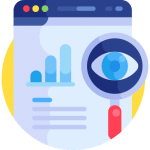
3. Promoting Transparency Initiatives
The complexity and intricacies of the supply chain present a formidable challenge in fostering transparency within the realm of procurement. Operating within the expansive landscape of the global business environment, a multitude of stakeholders—both internal and external—actively contribute to the intricate web of procurement processes.
The absence of clear and transparent communication channels, coupled with the lack of real-time access to crucial procurement data, can give rise to inefficiencies, misinterpretations, and even fractures in relationships between stakeholders. Beyond these operational challenges, the absence of robust transparency initiatives poses a significant risk for organizations, as they may find it difficult to meet regulatory requirements and industry standards. Such lapses expose businesses to potential legal complications and reputational damage that can reverberate throughout the broader business landscape.
The repercussions of the transparency challenge extend far beyond the confines of the procurement department, casting a pervasive shadow across the entire organizational structure. Addressing the challenge of promoting transparency in procurement is not merely an operational necessity; it is a strategic imperative that underpins the organization’s credibility, compliance, and overall resilience in an increasingly complex and interconnected business environment.
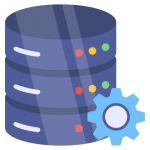
4. Ensuring Data Accuracy
The challenge of ensuring data accuracy in procurement is rooted in the vast amount of information involved in the sourcing and procurement lifecycle. Inaccurate data can result from human error, outdated systems, or the lack of standardized processes for data entry. The consequences of relying on inaccurate data extend beyond procurement decision-making to impact inventory management, supplier relationships, and overall operational efficiency.
Inaccurate data may lead to misguided strategic choices, financial miscalculations, and compromised supplier negotiations. The challenge lies not only in rectifying inaccuracies when they arise but also in implementing proactive measures to prevent their occurrence, ensuring that the data driving procurement decisions is reliable and reflective of the current business landscape.

5. Embracing Technology Adoption
While technology offers tremendous potential to enhance procurement processes, the challenge lies in the successful adoption and integration of these tools into existing workflows. Resistance to change, lack of technological expertise, and budget constraints can impede the seamless integration of procurement technologies.
The effects of this challenge manifest in missed opportunities for efficiency gains, delayed decision-making, and a failure to leverage data-driven insights. In a rapidly evolving digital landscape, organizations face the risk of falling behind competitors if they do not embrace technological adoption. The challenge, therefore, is not merely in selecting the right technologies but in cultivating a culture that values and adapts to the transformative potential of technological advancements in procurement.

6. Resolving Supplier-Related Concerns
Supplier-related concerns, ranging from poor communication to inconsistent product quality, present a multifaceted challenge in procurement. Ineffective communication with suppliers can lead to misunderstandings, delays, and missed opportunities for collaboration. Additionally, issues such as supplier financial instability or ethical concerns can pose risks to the overall supply chain.
The effects of this challenge extend beyond operational inefficiencies to impact product quality, customer satisfaction, and the overall reputation of the organization. The challenge is not only in identifying and resolving specific supplier-related issues but in establishing robust Supplier Relationship Management (SRM) practices that foster open communication, collaboration, and long-term partnerships. Successful resolution requires a proactive approach to supplier engagement, risk assessment, and ongoing performance evaluation.
Procurement Strategies to Handling
Embarking on the journey of procurement outsourcing necessitates a strategic approach to navigate the myriad challenges that may arise. The first line of defense in this complex landscape is Proactive Risk Management. Proactive risk management is not merely a reactive measure but a forward-thinking strategy that positions businesses to anticipate, assess, and respond effectively to dynamic and often unpredictable market conditions.
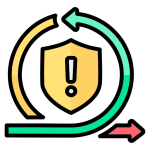
Proactive Risk Management
In the realm of procurement outsourcing, the proactive management of risks is akin to fortifying the foundation upon which the entire process rests. The identification and analysis of potential risks are the initial steps in this strategic approach. This involves an in-depth assessment of external factors, such as market fluctuations, geopolitical uncertainties, and regulatory changes, as well as internal factors like supplier vulnerabilities and operational dependencies.
Once risks are identified, organizations can develop contingency plans and response mechanisms, ensuring a swift and effective reaction in the face of disruptions. Proactive risk management is not a one-time endeavor but an ongoing process that demands continuous monitoring, assessment, and adjustment to align with the evolving landscape of risks in the procurement ecosystem. By embedding this strategic mindset, businesses can fortify their resilience against unforeseen challenges, contributing to the overall success of their procurement outsourcing initiatives.
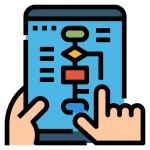
Centralized Procurement Processes and Visibility
Another pivotal strategy in the arsenal of handling procurement challenges is the implementation of Centralized Procurement Processes and Visibility. This approach is a proactive measure to curb the clandestine practice of dark purchasing, where unauthorized or unmanaged spending occurs outside established procurement processes.
By centralizing procurement activities, businesses gain greater control over purchasing decisions, ensuring compliance with organizational policies and regulatory requirements. Advanced procurement software further enhances visibility, allowing organizations to track and manage purchases, detect irregularities, and enforce adherence to standardized procedures. Centralized procurement processes and visibility not only mitigate the risks associated with dark purchasing but also contribute to greater operational efficiency and transparency, fostering a robust foundation for successful procurement outsourcing.

Enhanced Communication and Reporting
In the intricate web of procurement outsourcing, effective communication and transparent reporting stand as linchpins for success. Enhanced Communication and Reporting serve as a cornerstone strategy to foster collaboration, align objectives, and build trust among stakeholders. Establishing clear communication channels ensures that information flows seamlessly between procurement teams and other departments, facilitating a shared understanding of goals and expectations.
Real-time access to procurement data through comprehensive reporting tools not only promotes transparency but also empowers stakeholders with the insights needed for informed decision-making. Regular audits and communication protocols further contribute to creating an environment where transparency and accountability become ingrained in the organizational culture. In the realm of procurement outsourcing, where information is paramount, enhanced communication and reporting form the bedrock for sustainable success.
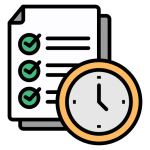
Data Quality Management
In the age of data-driven decision-making, the accuracy and reliability of information are paramount. Data Quality Management emerges as a crucial strategy in handling the challenge of inaccurate data in procurement outsourcing. This involves implementing rigorous data validation processes to ensure that the information entering the procurement systems is precise and dependable.
Investing in modern procurement software equipped with robust data validation features provides an additional layer of assurance. Beyond technological solutions, training procurement teams on data entry best practices becomes imperative to maintain data integrity. Regular audits and data cleansing activities further contribute to the ongoing commitment to upholding the quality of data within the procurement ecosystem.
In essence, Data Quality Management is not merely a technical requirement but a strategic imperative for organizations looking to extract meaningful insights and drive effective decision-making in the procurement outsourcing landscape.

Technology Adoption Roadmap
The relentless pace of technological evolution presents both an opportunity and a challenge in the realm of procurement outsourcing. The Failure to Adopt Technology is a common stumbling block, impeding the realization of the full potential of outsourcing initiatives. A strategic response to this challenge involves developing a Technology Adoption Roadmap.
This comprehensive plan begins with a meticulous assessment of current technology capabilities, identifying gaps and opportunities for improvement. The roadmap outlines the phased adoption of new technologies, considering budgetary constraints and resource availability. Providing training and support for procurement teams is an integral component, ensuring that the workforce is equipped to leverage the full spectrum of technological advancements. A well-executed technology adoption roadmap not only enhances operational efficiency but positions organizations to thrive in an increasingly digitized procurement landscape.

Strategic Supplier Relationship Management (SRM)
In the intricate dance of procurement outsourcing, supplier relationships are the focal point of success. Strategic Supplier Relationship Management (SRM) emerges as a proactive and holistic strategy to address and resolve supplier-related concerns. Establishing clear criteria for supplier selection and evaluation ensures alignment with organizational goals and values.
Open communication and collaboration with key suppliers foster a partnership-oriented approach, where mutual understanding and shared objectives become the bedrock of success. Implementing SRM programs further solidifies these relationships, creating a framework for continuous improvement, conflict resolution, and long-term collaboration. In the ever-evolving landscape of procurement, where supplier dynamics play a pivotal role, Strategic Supplier Relationship Management is not just a strategy; it’s a fundamental philosophy that contributes to the sustainable success of outsourcing initiatives.
Advantages of Procurement Outsourcing
Outsourcing procurement functions emerges as a strategic move with a myriad of benefits, fostering operational efficiency and yielding strategic advantages.
Cost Reduction
Embracing procurement outsourcing stands as a powerful avenue for cost reduction. By tapping into external procurement expertise and harnessing economies of scale, businesses can unlock substantial savings in operational expenses. This cost-effective approach proves particularly valuable for organizations seeking financial optimization while upholding the integrity of their products or services.
Effective Risk Management
A pivotal advantage of procurement outsourcing lies in its ability to elevate risk management practices. External procurement partners, equipped with extensive experience, contribute valuable insights to identify and address potential risks within the supply chain. This collaborative effort enables businesses to proactively manage risks, ensuring resilience and continuity in the face of unforeseen challenges.

Boosted Efficiency
Outsourcing procurement functions facilitates a leap in efficiency by tapping into specialized skills and advanced technologies. External experts, well-versed in industry best practices, orchestrate a streamlined and optimized procurement workflow. This efficiency infusion translates into time savings, heightened resource utilization, and accelerated procurement cycles.
Streamlined Compliance
Procurement outsourcing simplifies the intricate landscape of regulatory compliance. External partners, intimately familiar with industry regulations and standards, ensure that all procurement activities align with legal requirements. This streamlined compliance not only minimizes the risk of penalties but also cultivates confidence among stakeholders in the ethical and legal conduct of procurement operations.
Enhanced Quality
The advantages of procurement outsourcing extend to the realm of enhanced quality in procured goods and services. External partners, leveraging established relationships with reputable suppliers, employ their expertise to uphold the highest quality standards. This unwavering commitment to quality control ensures that businesses receive superior products and services, thereby contributing to the overall success and stature of the organization.
In essence, while the challenges of procurement outsourcing should not be underestimated, the array of advantages it brings to the table positions it as a transformative strategy for businesses seeking not only to streamline their procurement processes but also to achieve a sustainable and competitive edge in the contemporary business landscape. The careful consideration of these benefits, coupled with a proactive approach to address challenges, allows organizations to harness the true potential of outsourcing procurement for long-term success.
In the ever-evolving tapestry of global business, the strategic imperative of procurement outsourcing cannot be overstated. As organizations increasingly seek to streamline operations, reduce costs, and enhance overall efficiency, the outsourcing of procurement functions emerges as a beacon of opportunity. However, the road to success in procurement outsourcing is riddled with challenges that demand more than a mere reactionary response. It requires a holistic and proactive approach that begins with a profound understanding of the intricacies involved. The identification and comprehension of the top challenges, from mitigating risks to navigating the complexities of dark purchasing practices, lay the groundwork for strategic planning.
Effectively handling these challenges involves the implementation of comprehensive strategies tailored to the unique needs and goals of each organization. Proactive risk management becomes the guardian of stability, enabling businesses to anticipate, assess, and mitigate potential disruptions. The centralization of procurement processes not only guards against the shadowy pitfalls of dark purchasing but also promotes transparency and control. Enhanced communication and reporting fortify relationships and foster an environment of collaboration, ensuring that all stakeholders are aligned in their objectives.
Data quality management becomes the guardian of precision, ensuring that the information fueling decision-making is reliable. The development and execution of a technology adoption roadmap empower organizations to stay ahead in the digital curve, leveraging technological advancements for sustainable success. Finally, the cultivation of strategic supplier relationships goes beyond mere transactions, transforming supplier dynamics into a foundation of mutual growth and success. By weaving these strategies into the fabric of their procurement outsourcing endeavors, businesses can not only weather the challenges but also emerge stronger, more resilient, and optimally positioned for enduring success in the competitive global business arena.

Frequently Asked Questions
1. What are the common challenges faced in procurement outsourcing?
Procurement outsourcing often encounters challenges such as risk mitigation, dark purchasing practices, lack of transparency, inaccurate data, failure to adopt technology, and supplier-related issues. Understanding and addressing these challenges are crucial for successful outsourcing endeavors.
2. How can businesses mitigate risks in procurement outsourcing?
Mitigating risks in procurement outsourcing involves proactive risk management strategies. This includes thorough risk assessments, contingency planning, and building diversified relationships with suppliers to minimize the impact of potential disruptions.
3. What is the impact of dark purchasing practices on procurement outsourcing?
Dark purchasing, or unauthorized and unmanaged spending, can undermine the efficiency and transparency of procurement outsourcing. Implementing centralized procurement processes, visibility, and robust tracking mechanisms are essential to mitigate the risks associated with dark purchasing.
4. How does technology adoption contribute to overcoming procurement challenges?
Adopting technology is a key strategy to address challenges in procurement outsourcing. A well-planned technology adoption roadmap, including the use of advanced procurement software, enhances efficiency, transparency, and data accuracy, contributing to overall success.
5. What role does strategic supplier relationship management (SRM) play in overcoming supplier-related challenges?
Strategic Supplier Relationship Management (SRM) is crucial for resolving challenges related to suppliers. By setting clear criteria for selection, fostering open communication, and implementing SRM programs, businesses can build strong, long-term partnerships, ensuring a collaborative and mutually beneficial relationship with suppliers.
